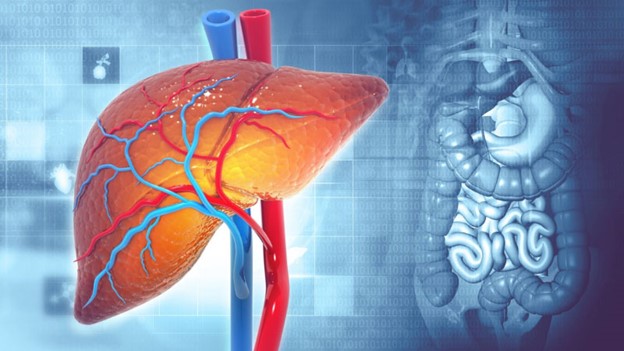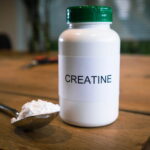Many wonder, “How do external factors, particularly toxins, influence our body’s internal processes?” The liver, one of our body’s most vital organs, plays a crucial role in detoxifying harmful substances and regulating various metabolic functions. One of its indispensable roles involves cholesterol synthesis, a process that is necessary for cellular functions and overall bodily health.
The National Institute of Health estimates that 25-33% of global disease is attributed to environmental risk factors, which include dietary and endogenous toxins. It becomes essential for us to understand how toxins interfere with cholesterol synthesis in the liver and what it means for our well-being. While this is complex, pharmaceutical interventions, like the Crestor 5 mg Tablet, have been developed to address cholesterol-related issues effectively.
Cholesterol Synthesis
What is cholesterol?
In all of the cells of your body, there is a waxy (fat-like molecule) known as cholesterol. To produce hormones, vitamin D, and chemicals that aid in food digestion, your body requires cholesterol. The human body makes all the cholesterol it needs.
Where does cholesterol synthesis occur in the human body? For sure, it is the liver. It acts as the central hub, producing and releasing cholesterol into the bloodstream. Based on the body’s needs, the liver smartly regulates the amount of cholesterol secreted. For instance, if dietary cholesterol intake is high, the liver adjusts by making less. About 75% of the cholesterol in our body is synthesized internally, while only 25% comes from dietary sources.
What’s the process of cholesterol creation? Let’s understand:
Enzymatic Reaction
Cholesterol synthesis begins with a series of enzymatic reactions. Simplified, it starts with a molecule called acetyl-CoA and, through a series of steps, transforms into the cholesterol we know.
Hydroxymethylglutaryl-CoA (HMG-CoA) Reductase is an enzyme that synthesizes cholesterol and other isoprenoids. The mevalonate pathway, a crucial step in the production of cholesterol and critical non-sterol isoprenoids, is created by HMG-CoA reductase.
What Exactly Toxins Are?
The term “toxins” describes toxic compounds that are created by living cells or creatures. When introduced in modest amounts, they can be harmful to other humans. Toxins come from many different places and are categorized according to where they came from or how they were made. Here are the types of toxins:
Environmental Toxins: These are harmful agents found in our surroundings. Examples include pesticides, pollutants in the air and water, and certain industrial chemicals.
Dietary Toxins: These come from what we consume (food we eat). Examples are certain food additives, excessive alcohol, or substances in improperly stored or cooked foods.
Endogenous Toxins: These toxins originate inside our body. They can be metabolic by-products or other substances that, in excess, become harmful. For instance, a by-product of the synthesis of cholesterol might turn toxic if not properly managed.
There are 3 routes of toxin exposure. They are:
– Ingestion (consuming contaminated food or drink)
– Inhalation (inhaling polluted air)
– Skin Contact (Absorption of toxins through the skin. For example, using skincare products containing harmful toxins.)
Toxins that Impact the Liver Directly
Our liver filters out harmful substances from our body. However, certain toxins can pose significant challenges. That affects the liver’s function in the synthesis of cholesterol. Let’s explore some of these toxins impacts on the Liver:
Heavy Metals
Heavy metals like lead, mercury, and arsenic can destroy liver enzymes responsible for the synthesis of cholesterol, potentially disrupting the balance of cholesterol in the body. The common sources include:
– Old paint (lead)
– Certain fish (mercury)
– Contaminated groundwater (arsenic)
Industrial Chemicals & Solvents
Chemicals like Carbon Tetrachloride and Vinyl Chloride induce oxidative stress. It causes damage to liver cells. This further interrupts cholesterol synthesis and overall lipid metabolism.
For example, Workers in industries like PVC manufacturing (vinyl chloride exposure) or those using cleaning solvents (carbon tetrachloride) need to be particularly cautious.
Alcohol and its Metabolites
Alcohol can affect cholesterol production, possibly raising its levels. Excessive alcohol consumption leads to liver inflammation and damage. High levels of cholesterol for too long due to alcohol increase the risk of conditions like fatty liver disease.
According to the NIH, or National Institutes of Health, more than 90% of heavy drinkers who take 4 to 5 standard drinks daily develop fatty liver disease (i.e., steatosis). It highlights the direct link between alcohol consumption & liver health.
Consequences of Altered Cholesterol Synthesis
Cholesterol is important for our health. If something, like toxins, changes how cholesterol is made, it can have big effects. So, what happens when this process goes wrong?
Atherosclerosis
As a result of atherosclerosis, the arteries thicken or become harder. Plaque deposits form the inside lining of the arteries. As it builds up in the arteries, it stiffens and thickens the arterial walls. The plaque is composed of fatty materials, cholesterol, waste products produced by cells, calcium, and fibrin.
Liver Diseases
From fatty liver (where excess lipids accumulate) to liver cirrhosis (marked by tissue scarring) and even liver cancer, the stakes are high when cholesterol synthesis is disturbed. The prevalence of toxin-induced fatty liver disease has seen a spike of 25% over the past decade, emphasizing the crucial role of balanced cholesterol synthesis as per NIH.
What Are the Prevention and Management Methods?
It’s time to learn how to avoid and handle these problems. It’s better to prevent than fix issues. So, how can we avoid these bad substances and keep our cholesterol in check?
Reducing Toxin Exposure
Vigilance is Key: Whether it’s the environment we live in or the food we consume, being aware and cautious reduces the risk. From choosing organic foods to using air purifiers, every bit counts.
Detoxification: People talk a lot about ‘detox,’ but not all detox methods work the same way. Choose methods that are supported by science, like drinking water and eating foods that help with detox, such as greens and citrus fruits.
Dietary & Lifestyle Interventions
Eat Right: Foods like walnuts and fatty fish that are rich in omega-3 fatty acids support liver function and balance the levels of cholesterol. Similarly, incorporating foods rich in antioxidants, such as berries and green tea, can fend off the damaging effects of toxins.
The Power of Plants: Plants have natural compounds called phytonutrients that are good for the liver. Foods like turmeric and beetroot are especially good for liver health because of these compounds.
Regular Health Screenings: Regular liver function tests and cholesterol checks act as an early warning system, catching any imbalances before they escalate. With early detection, personalized strategies, from dietary changes to medications, can be tailored to ensure optimal health.
Buy Crestor tablets from the best Canadian online pharmacy to control your cholesterol levels efficiently.
Conclusion
A thorough study of this issue highlights the irrefutable connection between toxins and their detrimental effects on the liver’s ability to cholesterol synthesis. Understanding the complex relationship between toxicity exposures and cholesterol production is crucial for liver function but is also important for cardiovascular health.
Understanding and proactively reducing these exposures in an age where environmental and dietary toxins are pervasive becomes more than just a suggestion—it’s essential for overall health.
Read Also
- Why the Keto Diet Works for Some People—and Fails Dramatically for Others: An Ayurvedic Breakdown for Modern HealthcareThe keto diet has dominated weight-loss culture for years. For some people, it produces rapid fat loss, stable energy, and improved mental clarity. For others—especially those who gain weight easily—it leads to burnout, digestive distress, rebound weight gain, high cholesterol, and a metabolism that feels slower than before. Healthcare often frames this as a discipline… Read more: Why the Keto Diet Works for Some People—and Fails Dramatically for Others: An Ayurvedic Breakdown for Modern Healthcare
- How to Choose the Best Assisted Living Facility for SeniorsAre you looking for the right assisted living facility for a senior loved one? Choosing a place can feel overwhelming. There are many factors to consider, from care services to the environment. Safety, comfort, and social opportunities play important roles in daily life. Each senior has unique needs and preferences that must be met. Understanding… Read more: How to Choose the Best Assisted Living Facility for Seniors
- Burn Smart, Not Hard; Shape Burn: Clean Protein for Weight ManagementYou want to feel light, strong, and confident. You don’t want crash diets or fake promises. You need a plan that works with your body, not against it. That’s where Shape Burn comes in. You can burn fat without losing strength. You can eat better and stay full. You can manage weight in a way… Read more: Burn Smart, Not Hard; Shape Burn: Clean Protein for Weight Management
- Creatine Basics: How Much Is 5g, How Much Water You Need, and Whether Pills or Powder Work BetterIf you’ve ever walked into a supplement aisle or scrolled through fitness TikTok, you’ve probably seen people talking about creatine — usually with a shaker bottle in hand and promises of better workouts and faster gains. And honestly? They’re not wrong. Creatine is one of the most researched and effective supplements for muscle strength, recovery,… Read more: Creatine Basics: How Much Is 5g, How Much Water You Need, and Whether Pills or Powder Work Better
- Understanding Breast Cancer in Men: Key Facts and SymptomsBreast cancer is often thought of as a disease that only affects women. However, men can develop it too. Although it is less common, early detection and awareness are important. Read on to learn key facts, symptoms, and ways men can take action to protect their health. How Common Is Breast Cancer in Men? Breast… Read more: Understanding Breast Cancer in Men: Key Facts and Symptoms






